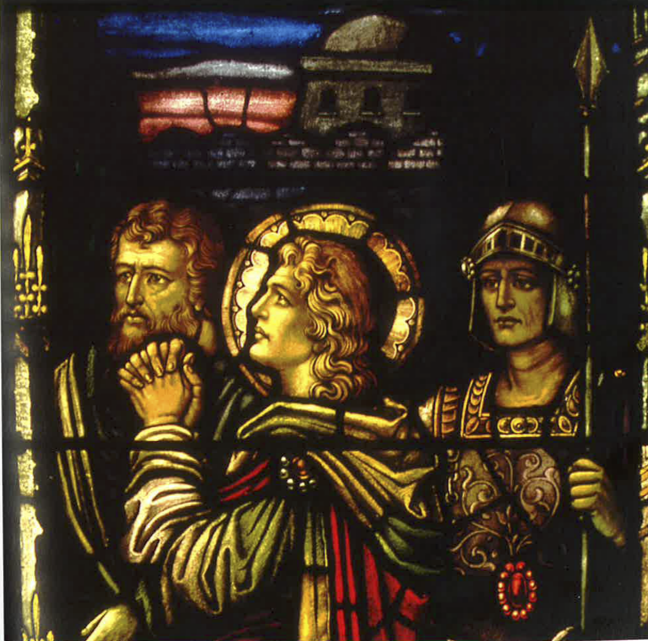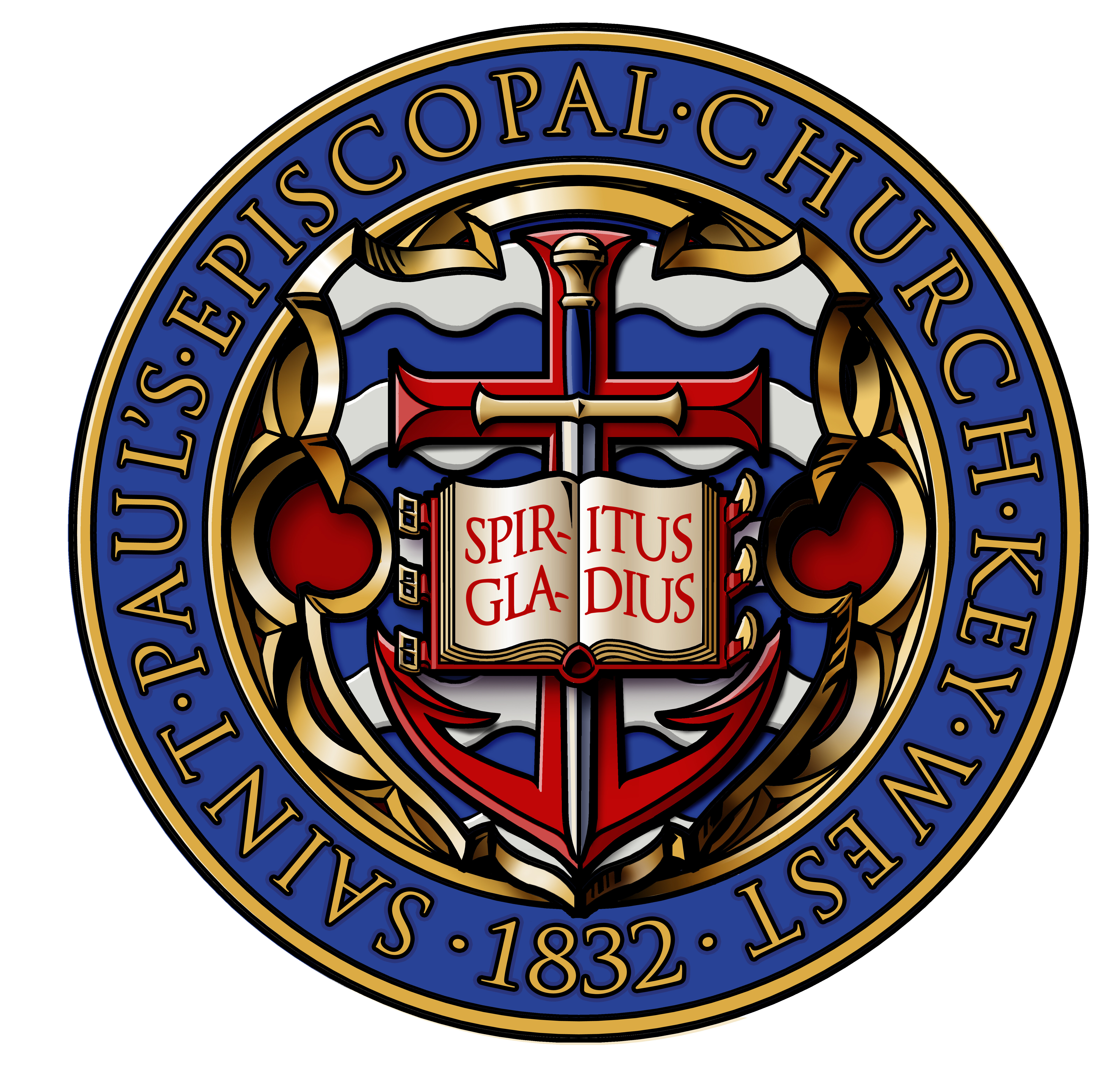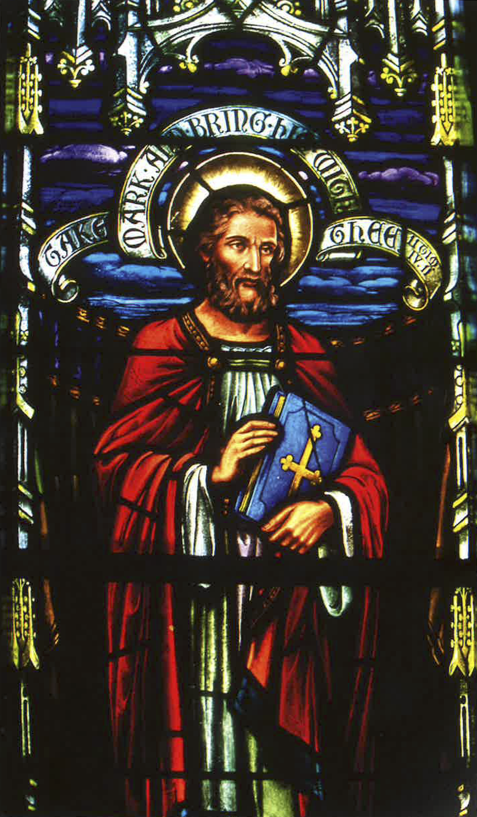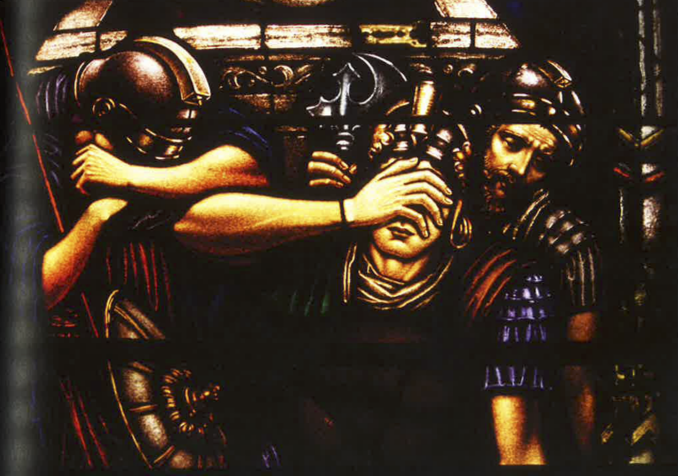
Crucifixion (Right Panel Detail)
Phipps, Ball & Burnham - 1920
St. Paul's Church Sunday School
DESCRIPTION: The narrative theme of the entire glorious and ornate three-paneled window is the Crucifixion. The narrative is divided into three panels, linked together via the ornate silver stain canopy under each of the three gothic arches.
The right panel depicts three figures: a bearded older man, Saint John, and a Roman centurion. In this detail, the handsome Roman soldier, holding a spear, is in full military dress. Centurions were in command of 100 soldiers, drilling them and inspecting their arms, supplies and food. They also supervised the scourging and capital punishment. The centurion represented here stands out, for around his waist he wears a belt with a red jewel buckle which draws the eye.
THE STORY: John is the only disciple recorded to have been present at the crucifixion of Christ, and he is depicted in the Crucifixion. When Jesus looked down from the cross and "therefore saw his mother and the disciple stranding by, whom he loved, he saith unto his mother, Woman, behold thy son! Then saith he to the disciple, Behold thy mother! And from that hour that disciple took her unto his own home." (John 19:26-27)
The centurion in this detail is the army officer in charge of the four soldiers who put Jesus to death. Despite his role, he is honored in this depiction of the Crucifixion for the realization that came upon him at the time of Jesus' death. As recorded in Luke 23: 46-47: "And when Jesus had cried out with a loud voice, he said, Father, into thy hands I commend my spirit: and having said thus, he gave up the ghost. Now when the centurion saw what was done, he glorified God saying, Certainly this was a righteous man."
MEMORIAL: Among the senior members of St. Paul's there are a few who remember the nickels and dimes they gave towards the building of the fourth church, but none remember the details of this window specifically. The Minutes of the Vestry, dated July 19, 1919, recorded that Mr. W. G. Ball submitted a proposition to furnish a number of cathedral glass windows. At that meeting, the vestry signed an agreement for placing a Sunday School window in the chancel.
Since this detail portrays an army officer, it is fitting to remember The Reverend Osgood Herrick who, for a time during the Civil War, was both rector of St. Paul's and chaplain of the U. S. Army in Key West and Fort Jefferson. During the yellow fever epidemic, he ministered to the sick and dying of the community and the military and was made chaplain of the post. Later during his career he served as Army chaplain at the Chapel of the Centurion in Fort Monroe, Virginia.
Source: The Golden Cockerel: The Art, Symbolism & History of the Stained Glass Windows, St. Paul's Episcopal Church, Key West, Florida by Winifred Shine Fryzel.
Please consider making a donation to St. Paul's so that we may continue our work, including the stewardship of our beautiful grounds, buildings, and windows.




Login To Leave Comment